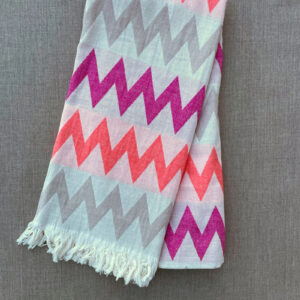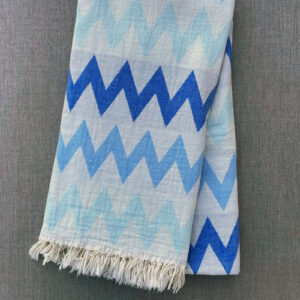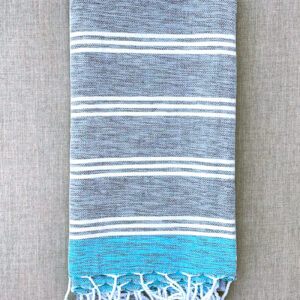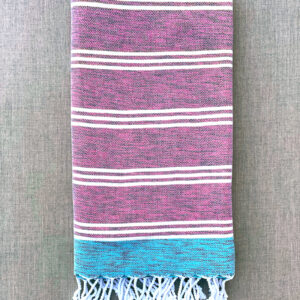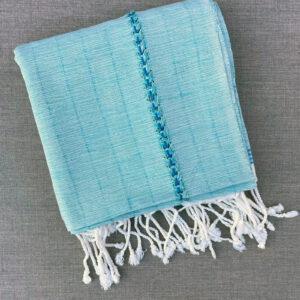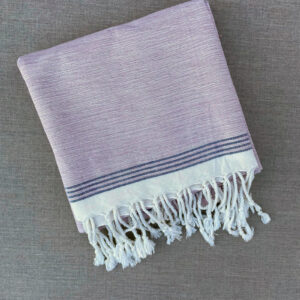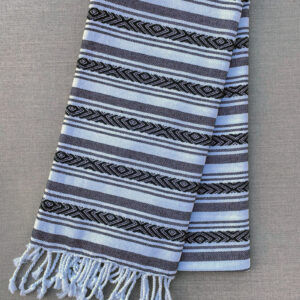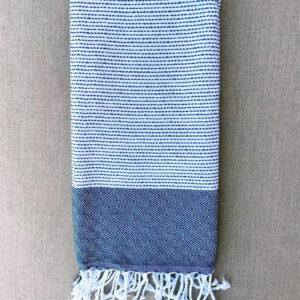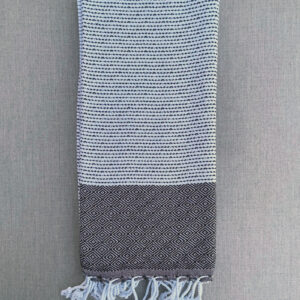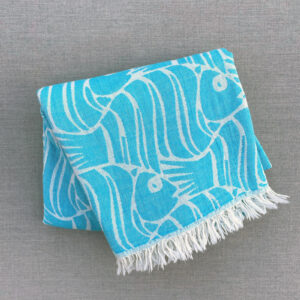
Peshtemals – versatile Turkish towels
A Peshtemal is a traditional hand-loomed bath towel, also known as a fouta or a hammam towel. Peshtemals come with high absorptive qualities but they are certainly not your regular terry cloth – they are lightweight and dry much faster than thick conventional towels.
With a history that dates back hundreds of years, peshtemals have been a staple of the Persian and Ottoman hammam culture originally intended for individual bathers to retain their privacy.
“Peshtemal” derives from the Persian words “Püşt and Mal,” and actually means “back towel”. A Peshtemal (also spelled peshtamal, pestamal or pestemal) is a rectangle woven textile, also known as one of the most rudimentary garments. For example, in Egyptian culture reliefs that have remained to the present day, the dressing style is the rectangular peshtemal wrapped around the hips.
Made from 100% cotton or bamboo, the soft and velvety flat woven fabric has been inspired by the bath towels used in Turkish spas and baths. Peshtemals are densely woven, making them strong and long-lasting. They are easy to carry and take up very little space which makes them an ideal travelling partner. Thus, nowadays peshtemals are not only used in baths but also on the beaches, pools, gyms, saunas, and even on your dining table. They also stand out due to their functional and water-absorbent features, as well as their patterns and colors in yoga studios, sports, and swimming pools.
They’re also extremely adaptable. Of course, they make fantastic bath towels. However, you may also use your peshtemal as a pool or beach wrap. They are frequently handwoven by local artists. The vast benefits of Turkish towels are well-known, but their origin is less so. While these fashionable and lightweight textiles can be found in carefully picked boutiques, spas, and fitness studios, their appeal stretches back to the 14th century. The design and colors are woven into the towel frequently revealed the place from whence the folks came. This tradition is still practised today, and it is part of what makes the Turkish towel, or peshtemal, so unique. It is not only a stylish and effective lifestyle accessory, but it is also a long-standing feature of Turkish culture and history.
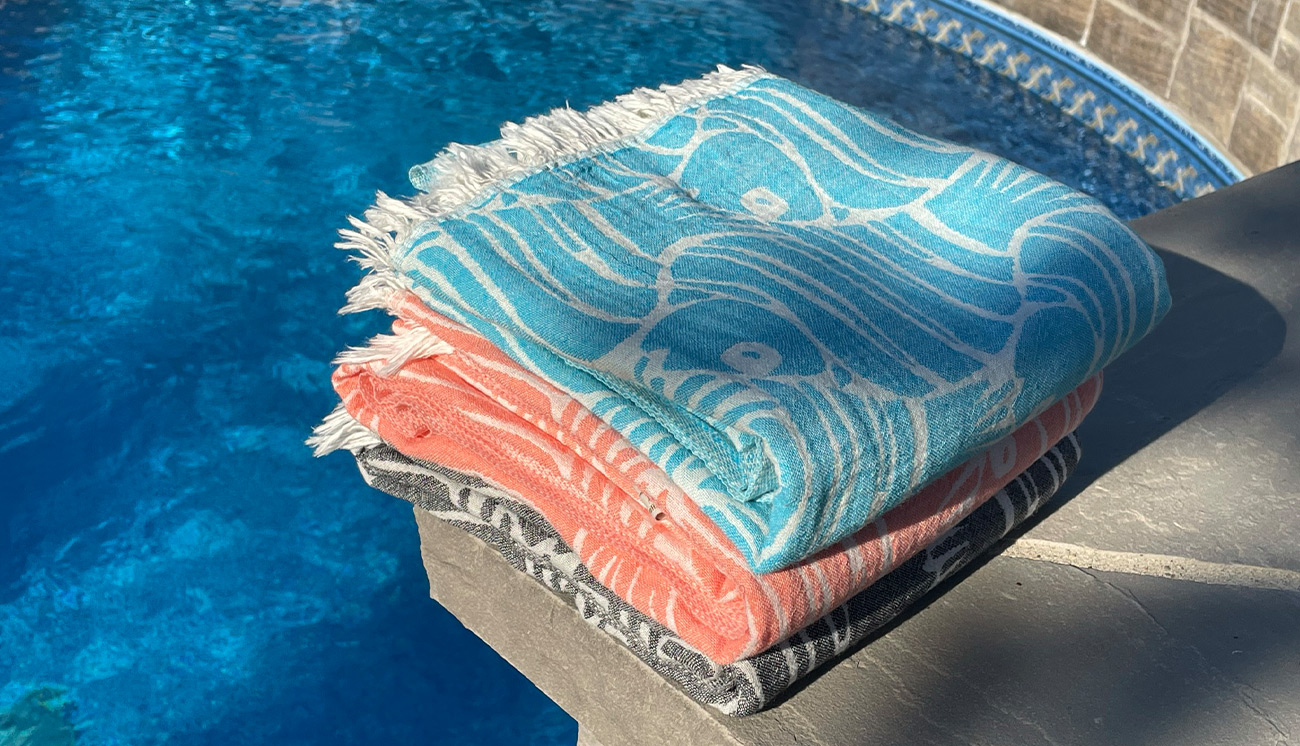
Peshtemal, which is as absorbent as other towels but dries faster due to its thinness, produces less or no bacteria when compared to other towels. Aside from taking up little space in your suitcase or cupboard, it is a useful, beautiful, and environmentally responsible tool. Peshtemal is available in two varieties: basic peshtemal and peshtemal towel. It is becoming increasingly popular since it is light, dries quickly, absorbs water efficiently, and does not leave fluffs behind. The most notable of these is its lightness. The peshtemal, which weighs 200 to 300 grams, dries in five to ten minutes. It does not take up a lot of room in a bag or baggage like a towel.
Peshtemals are woven from natural yarns such as linen, cotton, and bamboo and usually have a colored vertical striped design. They are considered as the earliest costumes in human history – worn by males under the waist and by women from the underarms. The Peshtemal was also worn in the hammam by Sultans of the Ottoman dynasty. When a couple chose to marry, they would give each other a bath set as a present, according to traditional Turkish traditions. The Turkish towel peshtemal was the most important item of this set.
The Ottomans gave the Turkish people the opportunity to brag about their culture in the form of Peshtemals, which they still do today. While there are many other parts of Turkey’s rich culture and customs, the Peshtemals are an important part of them. Peshtemals are still used as bath towels nowadays, but they are also popular in other contexts.






